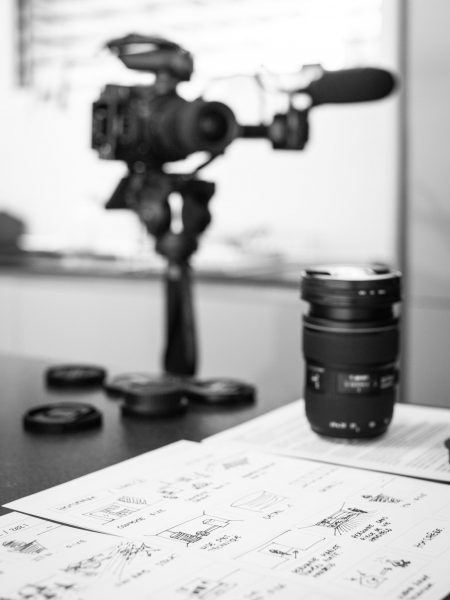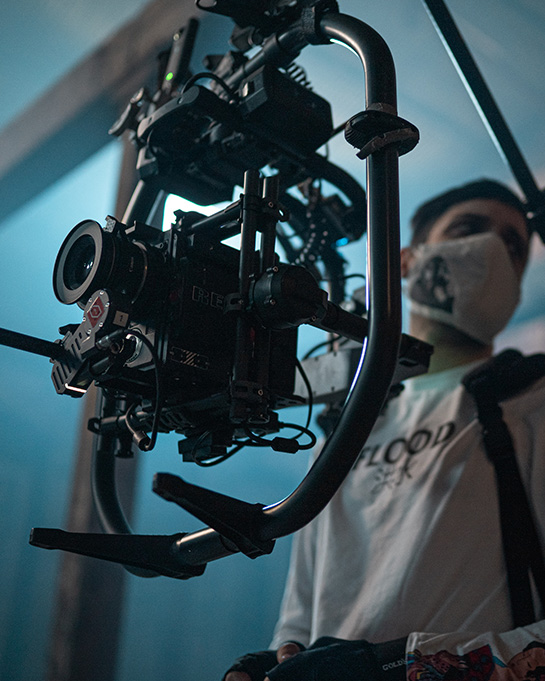It’s not uncommon for a company to want to include corporate videos in a campaign.
Whether it’s content that will go out to a public audience, or convey an internal message, all corporate video production follows a process similar to making a movie.
The problem is, most people who want to make a corporate video have an unrealistic idea of the time they take to complete. Expectations of super-fast turnaround times, or minimal hours to shoot, often create conflict between the production team and the corporate team. The best way to resolve this is to become better acquainted with the process of corporate video production.
Step 1: Concept Pitch
Step one is really having an idea. What comes next is the process of translating that idea onto the screen. Your idea may make the concept obvious. If you’re looking to do an on-screen interview or a specific demonstration, for example. Your idea may also be general enough that there’s room to get creative.
In corporate video production, you want to see multiple concepts to review. They could have subtle differences, or be radically different from each other. Concept pitches can also hit a variety of price points, making it easier for you to understand the cost of video production, and what elements you could live without.
Step 2: Scriptwriting
After a concept gets chosen, your production team will begin to work on the actual script. This translates the concept into what gets filmed when you’re on set, and adds a deeper layer of detail to the project. Now, you’ll hear how the story of your video unfolds.
Scriptwriting is harder than it looks since we often write differently than we speak out loud. You can’t simply take PowerPoint slide copy and slap it into a script. Sentences should be short and easy to say. You don’t want your actors to stumble over lines. It’s also better to show as much as you can without having an actor tell what it is with words.
Expect to go through a few revisions when working at the script stage of corporate video production. Also, don’t be too surprised if things change the day of shooting. Sometimes you don’t realize a line isn’t working until you hear it said on set.
Step 3: Storyboarding
To assist in the visualization process of your project, before filming, your production team should create a storyboard. These can be as simple as pencil drawings, with stick figures. Sometimes they’re nothing but dots and circles, like a football play on a chalkboard. No matter the detail, including this step in your process makes filming a lot easier because:
- It helps your production team plan out shots and estimate your shoot schedule
- It gives you a visual way to walk through the story
- It creates reference materials to help build sets
- It offers up one more opportunity to take anything out of the shoot
Storyboards are perfect for those of us who retain information better visually. Reading a script is great, but seeing the story play out through these images can make a big difference.

Step 4: On The Set
Getting to the actual shoot can be very exciting. For someone not used to being on set, all the working parts are fascinating. There’s crew members setting up cameras and lights, set dressers getting organized, actors and actresses in makeup and wardrobe — lots of activity.
Being on set can also mean a very long day. Even with a set schedule, things can come up unexpectedly. It’s always a good idea to approach your shoot with patience. Defer to the production team as much as possible and have confidence in their decisions. Sometimes they see things in a scene that you don’t.
Also, don’t forget to enjoy the day. You are watching your idea become a reality after all.
Step 5: Inserting Graphical Elements
The graphics team has usually already begun their work by the time you’re on set. Based on how graphics-heavy your concept is, this team can get pretty busy. This portion of your video is often worked into the storyboards, so you’ll have an idea of what things will look like before you actually see them.
This talented group handles a lot of different pieces to a video, from animations to effects to kinetic text. Even the titles that pop up on screen to introduce someone on camera come from the graphics department.
You most likely won’t see this work until the review process of your corporate video. As components are complete, they’re inserted into the existing footage.
Step 6: Editing
The graphics team has usually already begun their work by the time you’re on set. Based on how graphics-heavy your concept is, this team can get pretty busy. This portion of your video is often worked into the storyboards, so you’ll have an idea of what things will look like before you actually see them.
Step 7: Review and make edits
At this point in the process, you get to see a complete version of your video. You and the key stakeholders of your company will watch it and submit notes. These are the changes you’d like to see in the video in order for it to reach completion.
Your production team will advise you on your notes, helping you understand what’s possible to fix in your timeframe, what can’t get redone, and what might cost a little more to handle. Then, it’s up to you to decide on a final list of edits, which the team will complete.
Step 8: Delivery Of Final Video
The corporate video production process is done once you’ve reached this step. You’ve got your final video in hand, ready for release. Based on where you want that to go, you may need some extra assistance from your production team. They should offer services related to distribution.
ECG creates a seamless corporate video production process
While each step in corporate video production is different, the entire process shouldn’t feel choppy and disjointed. You are working on a single idea after all. Each step should naturally move into the next.
Finding the right full-service production company to partner with makes that happen. At ECG Productions, our talented team can do it all, working with you from start to finish to create engaging and compelling corporate video content. Ready with an idea? Contact us today to get the conversation started.

